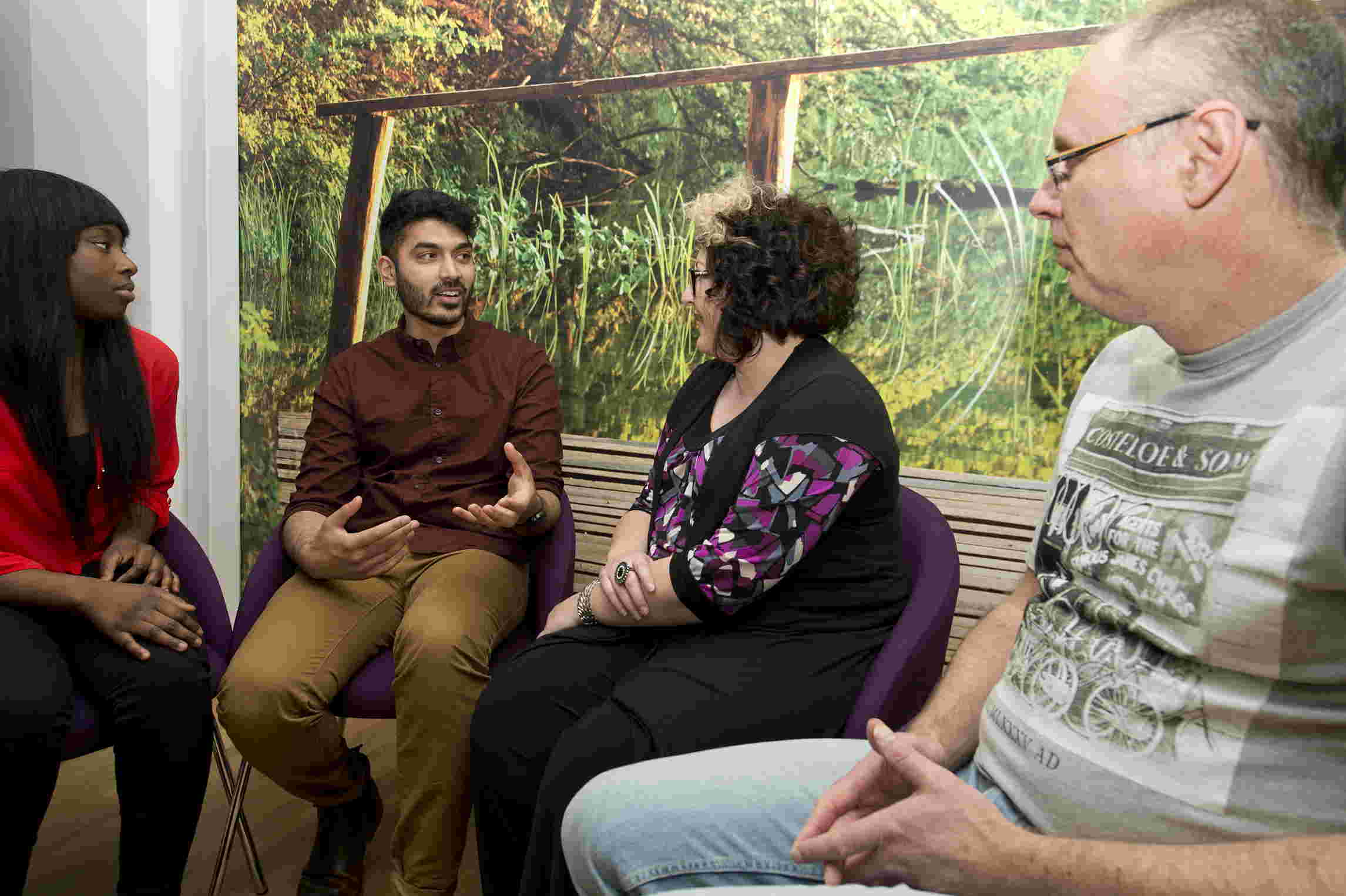
Image courtesy of Time To Change campaign
by Laura Dobie
Back in 2010, the Scottish Government and the Convention of Scottish Local Authorities (COSLA) published a ten year self-directed support (SDS) strategy, with proposals to give individuals real choice and control in the health and social care services that they receive. The strategy is part of a broader reform agenda, and supports current health and social care policy to deliver improved outcomes for individuals and communities.
Halfway through the ten-year strategy period, it seems timely to consider the impact that implementing this transformation in service delivery is having on local authorities in Scotland.
What is self-directed support?
SDS allows individuals to choose the way in which their support is provided, and allows them as much control as they would like over their individual budget. It is not the same as personalisation or direct payments. SDS is a means of delivering personalisation, while direct payments are one of four options for delivering SDS:
- Local authorities make direct payments to individuals which they can use to arrange their own support;
- The local authority allocates funding to the provider of the individual’s choosing;
- The local authority arranges a service for the individual; or
- A combination of all three.
The benefits
An advantage of SDS is that it gives individuals the freedom to purchase the support that is best suited to their requirements. Some of the benefits highlighted in a review of self-directed support in Scotland are:
- Flexibility, control, choice and independence;
- The sustained delivery of personalised, quality, hands-on care;
- Enabling clients to continue living their lives as they wished, such as by remaining in work or keeping up long-established activities, instead of conforming to rigid routines of care;
- Helping families to stay together and family carers to continue in their caring role.
Implementation and impact on councils
SDS has required considerable change from service providers, who have had to alter the way in which they design, deliver and market services. Challenges in the implementation of SDS include training for social workers, dealing with the loss of economies of scale associated with personalisation, and achieving a greater degree of consistency in the approach employed by local authorities. There have also been concerns about costs and administration.
An Audit Scotland report last year, which reviewed local authorities’ progress in implementing SDS, has noted that SDS will have a considerable impact on social care at a time of growing demand and financial pressures. Professional staff are required to work in partnership with service users and their families, where appropriate, to identify services that will meet their needs. This approach is sometimes called co-production. The report found that council staff meet regularly with users, carers and organisations providing care, but have not always worked together with them in planning SDS.
The SDS strategy is a ten-year strategy running from 2010 to 2020, and it is not anticipated that councils will change the way in which they plan and deliver social care immediately. The Audit Scotland report found that councils have started to make substantial changes to social care, although progress has been slower in some areas.
Its case study councils expect to take between one and three years to offer the SDS options to all eligible individuals. They expect that fewer people will opt for day care centres and respite care but it will be challenging to shift away from this form of service provision – some people will want to continue to receive this form of support, however lower uptake may threaten the financial viability of these services.
The Audit Scotland report also found that some councils have underestimated the extent of cultural change required and the need for effective leadership. SDS is also changing the way in which councils are managing their social care budgets, and it is necessary for them to manage financial risks when implementing SDS.
Achieving successful co-design
The Institute for Research and Innovation in Social Services (IRISS) Pilotlight project has explored effective pathways to self-directed support (SDS) and ways of achieving successful co-design. The project website launched in May and contains useful SDS resources, lessons learned and a toolbox for successful co-design.
One of the project’s objectives was to explore how services can be delivered differently, in particular by engaging goups of service users and their families who can be excluded from participation. These groups could include people with mental health problems, vulnerable adults, disabled people of working age, and young people with additional support needs.
The project found that co-design could help councils develop more effective pathways to self-directed support for people who previously faced barriers. In a case study of the project, one service manager reported:
“Seeing the service users who have been involved in the process, I have known a lot of them for a long time and to see them take control and flourish and for their ideas to be taken on board has been a great success.”
Looking to the future
It is clear that self-directed support has required councils to make significant changes to the ways in which they work and deliver services, and that this transformation has occurred at a time when social care services are facing challenges related to demand and budget pressures.
Projects such as Pilotlight offer lessons and resources which can help councils and providers to plan and deliver support in conjunction with service users.
In June, the Scottish Government announced the award of funding to continue building the capacity of provider organisations to provide self-directed support, help develop the workforce and to ensure that support and information is available to individuals throughout Scotland to assist them in making informed choices. This three-year funding programme should help continue the major culture shift in the way health and social care services are delivered.
The Idox Information Service can give you access to a wealth of further information on social care services – to find out more on how to become a member, contact us.
Further reading
Self-directed support, Audit Scotland (2014)
Self-directed support: preparing for delivery, IRISS (2012)
Self-directed support: a review of the barriers and facilitators, Scottish Government (2011)
Share
Related Posts
By Donna Gardiner While free school meals (FSM) have been available in England on a means-tested basis since 1944, recent years have seen a renewed focus upon the potential benefits of providing free school meals to all school-aged children. Currently, ....
Today sees the start of Community Garden Week 2023. Across the UK, communities will be celebrating the many and varied types of community gardens, from children’s and neighbourhood gardens to therapy gardens and allotments. The benefits of community gardens are ....
By Hollie Wilson At the start of 2020, an independent review was published setting out what needed to be done to bring about changes to the care system for children and young people in Scotland. At the heart of the ....
The “No Wrong Door” (NWD) programme means exactly that – there is no wrong door to turn to for young people seeking support. NWD works on several core principles, which include working with young people’s birth family or guardians, allowing ....
